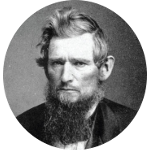Professor Manoj Thomas is a behavioral scientist who trains business executives to be customer-centric leaders and encourages them to build meaningful and purposeful connections with customers. Thomas has received the Apple Award and the Stephen Russell Family Teaching Award for excellence in teaching. Thomas is an expert on the psychology of price evaluations. He also studies how moral intuitions and political identity influence consumer behavior. His research has been published in marketing and psychology journals. He is the co-author of the book Why People (Don’t) Buy: GO and STOP signals. He is an associate editor for the Journal of Marketing Research and the Journal of Consumer Research.
Overview and Courses
How can we best guess whether a new product or service will be a hit with customers? Now more than ever, marketing managers need data-driven strategies to predict exactly how consumers will make their buying decisions, and human behavior is at the heart of this puzzle.
In this certificate program, you will assess why many common approaches to gauge purchase decisions are not effective and discover how to implement better strategies. Using many popular products as examples, you will examine how psychology plays a role in how customers behave, applying concepts such as heuristics and biases. You will be introduced to the three key drivers of consumer behavior – attention, emotion, and coherence – and determine how they impact customer behavior. Finally, you will gain applicable consumer behavior insights to help shape your branding and pricing strategies. By understanding why customers act the way they do, you and your teams can inform practices to more accurately and successfully bring your new product or service to market.
The courses in this certificate program are required to be completed in the order that they appear.
Course list
In this course, you will be introduced to the three most important drivers in unconscious thinking that help determine purchase decisions. You will explore attentional filtering, emotional primacy, and coherence, using examples to understand each driver's impact on customer behavior. You will also examine three counterproductive managerial styles which can derail attempts to make the best use of insights gained from consumer behavior.
You are required to have completed the following course or have equivalent experience before taking this course:
- Introduction to Behavioral Science
In this course, you will examine how customer behavior can be used to predict online purchases. You will explore what makes online purchasing unique, including connections with key metrics such as converting web traffic into purchases. You will also assess how the three key drivers of customer behavior impact the online purchasing environment. By the end of this course, you will have an improved understanding of the behaviors driving the metrics that your teams track to better engage customers online.
You are required to have completed the following courses or have equivalent experience before taking this course:
- Introduction to Behavioral Science
- Drivers of Consumer Behavior: Attention, Emotion, Coherence
In this course, you will assess whether it is always better to be the first one to introduce a new product or idea to the market. Using examples of popular consumer products, you will examine how products diffuse into a market to help you plan your strategy for introducing new products. You will apply insights about consumer behavior – tied to the three key drivers – to support your predictions of how consumers might adopt your new product.
You are required to have completed the following courses or have equivalent experience before taking this course:
- Introduction to Behavioral Science
- Drivers of Consumer Behavior: Attention, Emotion, Coherence
In this course, you will examine how a brand shapes consumer perceptions of products. Brands also trigger the three key drivers of consumer behavior — attention, emotion, and coherence — influencing customer judgments and decisions. You will also be introduced to a strategy for developing a brand positioning statement and explore the different types of brands to better align your practices for success across the marketplace.
You are required to have completed the following courses or have equivalent experience before taking this course:
- Introduction to Behavioral Science
- Drivers of Consumer Behavior: Attention, Emotion, Coherence
In this course, you will examine how behavioral science can help when developing a pricing strategy. You will explore best practices and discuss the importance of the three drivers of consumer behavior on pricing strategies, including understanding what makes a price coherent or incoherent, the effect of emotional responses to prices, and the influence of attentional biases on price evaluations.
You are required to have completed the following courses or have equivalent experience before taking this course:
- Introduction to Behavioral Science
- Drivers of Consumer Behavior: Attention, Emotion, Coherence
How It Works
- View slide #1
- View slide #2
- View slide #3
- View slide #4
- View slide #5
- View slide #6
- View slide #7
- View slide #8
- View slide #9
Faculty Author
Key Course Takeaways
- Explore the risks of relying on traditional market research
- Investigate the three key drivers of customer behavior along with common mistakes
- Assess and apply the main influences on online and offline purchasing behaviors
- Model and evaluate the process of product entry into a market to understand adoption of your own product
- Create a brand positioning statement and brand assessment map
- Investigate financial analysis for pricing and discover the impact of behavior on price evaluations

Download a Brochure
Not ready to enroll but want to learn more? Download the certificate brochure to review program details.
What You'll Earn
- Consumer Behavior Certificate from Cornell’s SC Johnson School of Business
- 60 Professional Development Hours (6.0 CEUs)
Who Should Enroll
- Marketers
- Brand managers
- Product managers
- Engineers and software developers
- Tech leaders
- Project managers
- UX and web design professionals
- Entrepreneurs

{Anytime, anywhere.}
Request Information Now by completing the form below.

Consumer Behavior
| Select Payment Method | Cost |
|---|---|
| $3,750 | |


